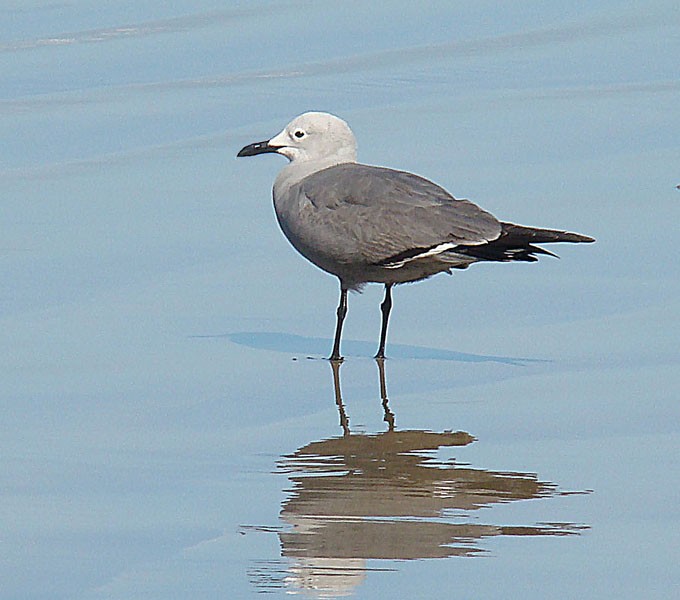Grey Gull
A species of Hooded Gulls Scientific name : Leucophaeus modestus Genus : Hooded Gulls
Grey Gull, A species of Hooded Gulls
Botanical name: Leucophaeus modestus
Genus: Hooded Gulls
Content
Description General Info
Description
The sexes are similar in grey gulls. Adults grow to a length of about 45 cm (18 in) and weigh some 360 to 400 g (13 to 14 oz). The head is white in summer but brownish-grey in winter. The body and wings are grey with the dorsal surface rather darker than the ventral region. The flight feathers are black and the inner primaries and the secondaries have white tips, visible in flight. The tail has a band of black with a white trailing edge. The legs and beak are black and the iris is brown. The call is similar to that of the laughing gull (Leucophaeus atricilla). 
Size
45 cm
Life Expectancy
15-30 years
Nest Placement
Ground
Feeding Habits
Grey Gull primarily feeds on mole crabs, supplemented by fish, nereid worms, and offal. Grey Gull forages along the shore, exhibiting a preference for intertidal prey, often captured via a unique run-and-grab technique.
Habitat
Grey Gull is commonly found in barren montane deserts with scarce vegetation and little to no fresh water. This species is also associated with sandy coastal beaches, where it often feeds and may join mixed feeding flocks with other seabirds over the nutrient-rich waters of the Humboldt Current. Grey Gull's typical breeding sites are located in desolate inland montane areas, however, occasional coastal breeding activity has been noted, particularly during environmental anomalies such as El Niño events.
Dite type
Scavenger
General Info
Feeding Habits
Bird food type
Distribution Area
The grey gull breeds inland in the Atacama Desert in northern Chile. Its non-breeding range includes Costa Rica, Colombia, Ecuador, Peru and Chile, and it has been recorded in the Falkland Islands, South Georgia and the South Sandwich Islands. It is a vagrant to Panama. 
